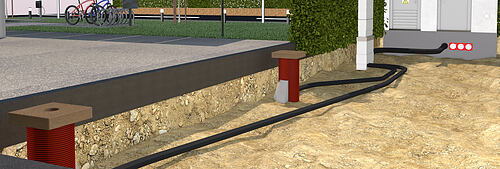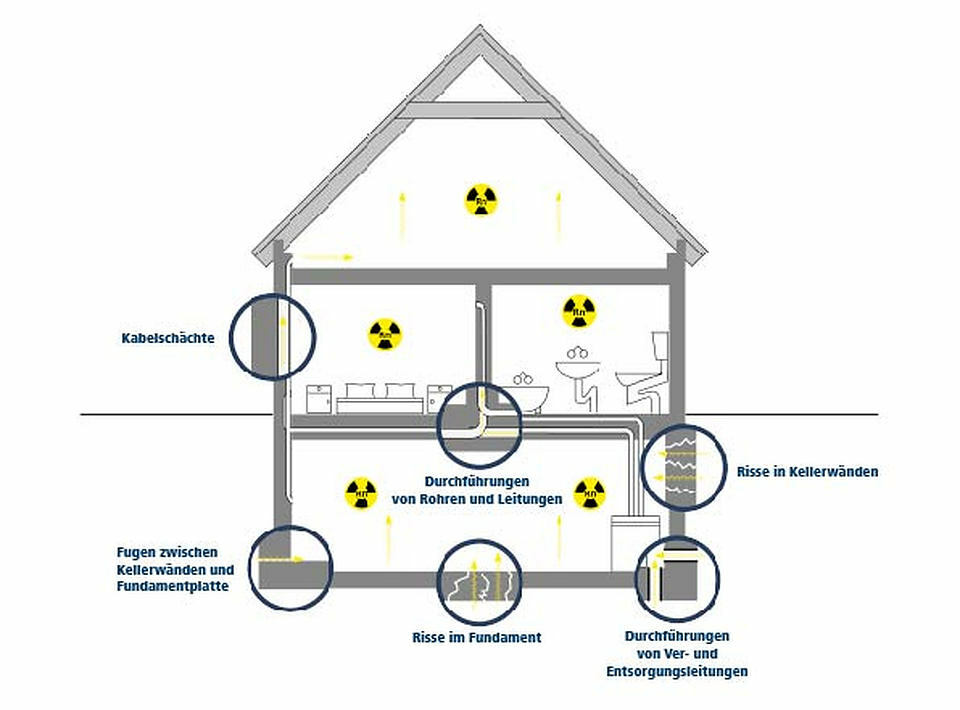Radon: reason to be concerned?
Ronnie Radon and radon expert Karin Leicht give an answer on urgent questions regarding this inert gas. At the beginning of the series they explain if there is a serious reason to worry and if there is sufficient educational work provided on this issue.
Especially in Germany, there is a high level of discomfiture not least because there have been closings of kindergartens and schools due to increased radon concentrations. But how dangerous is the radioactive inert gas radon and do we have to be concerned about our health?
Radon emerges through the radioactive decay of uranium and occurs especially in the soil. However, the concentration of radon can vary regionally. We cannot sense the inert gas as it is scentless, tasteless and without colour. Outdoors radon is mostly harmless as the concentration decreases as it mixes with air.
However, Ronnie Radon and his siblings are able to invade through minimal cracks and openings in components in contact with soil. If exposed to radon for a longer period of time, the risk of lung cancer statistically increases significantly.
In general, the dose makes the poison. Radon expert Karin Leicht and the radiation protection agree: The pollution of radon gas should be kept at the lowest possible level. Thereby, becoming hysteric is absolutely inappropriate, so the expert. It should not be the intention of the media to upset. Instead, there is a need for educational work as the inert gas as well as its characteristics and effects are not popular, yet.
In addition, Ms Leicht mentions recent developments concerning radon in the Heidenheim region, where Hauff-Technik is located. Therefore, she concerns the radon cases in kindergartens or schools, which were highlighted in the media and which led to fears. Therefore she also questions if the parents conceived the issue and for example measured radon pollution also at home, in their living and sleeping rooms, where they spend hours with their children.
As a result, not only should the radon concentration be measured in public buildings, but in all buildings with common rooms and of course also at home. Thereby, measures can be taken to lower the radon concentration. The very first thing to do is to stay calm.
Within the next weeks, will provide information on how to measure the radon concentration in buildings and which provisions against radon can be made.
(Sources: Interview with Ms Karin Leicht on 4th of December 2018 and website of the German institution Bundesamt für Strahlenschutz)


















































